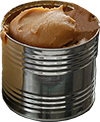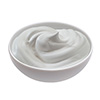Sign In Chef

By using our free meal planner (and the rest of spoonacular.com) you have to agree that you and only you are responsible for anything that happens to you because of something you have read on this site or have bought/cooked/eaten because of this site. After all, the only person who controls what you put in your mouth is you, right?
Spoonacular is a recipe search engine that sources recipes from across the web. We do our best to find recipes suitable for many diets — whether vegetarian, vegan, gluten free, dairy free, etc. — but we cannot guarantee that a recipe's ingredients are safe for your diet. Always read ingredient lists from the original source (follow the link from the "Instructions" field) in case an ingredient has been incorrectly extracted from the original source or has been labeled incorrectly in any way. Moreover, it is important that you always read the labels on every product you buy to see if the product could cause an allergic reaction or if it conflicts with your personal or religious beliefs. If you are still not sure after reading the label, contact the manufacturer.
We also attempt to estimate the cost and calculate the nutritional information for the recipes found on our site. Again, we cannot guarantee the accuracy of this information. Additionally, our nutrition visualizer that suggests that you limit sodium, sugar, etc., and get enough protein, vitamins, and minerals is not intended as medical advice. Similarly, our health tips are based on articles we have read from various sources across the web, and are not based on any medical training. The team behind spoonacular does not possess any medical qualifications and the information may be found to be incorrect or out of date based on future research. If you need help planning your diet or determining which foods (and recipes) are safe for you, contact a registered dietitian, allergist, or another medical professional.
Spoonacular is not responsible for any adverse effects or damages that occur because of your use of the website or any information it provides (e.g. after cooking/consuming a recipe on spoonacular.com or on any of the sites we link to, after reading information from articles or shared via social media, etc.)
×$1.27 per serving

32 likes

Ready in 45 minutes

Spoonacular Score: 38%
If you have about 45 minutes to spend in the kitchen, Dulce De Leche Cheesecake might be a super gluten free and lacto ovo vegetarian recipe to try. One serving contains 430 calories, 8g of protein, and 38g of fat. This recipe serves 10. For $1.27 per serving, this recipe covers 9% of your daily requirements of vitamins and minerals. A few people made this recipe, and 32 would say it hit the spot. If you have almond cookies, eggs, philiadelphia balance cream cheese, and a few other ingredients on hand, you can make it. It works well as a dessert. It is brought to you by Foodista. Taking all factors into account, this recipe earns a spoonacular score of 31%, which is not so great. Similar recipes are Russian Dulce De Leche Waffle Cake and Instant Pot Dulce De Leche, Dulce De Leche Cheesecake, and Dulce de Leche Cheesecake.
Late Harvest Riesling, Lambrusco Dolce, and Sauternes are my top picks for Cheesecake. White dessert wines are a safe pick for cheesecake (without chocolate), but a sweet lambrusco will be so good with classic strawberry cheesecake. The Snake River Late Harvest Riesling with a 5 out of 5 star rating seems like a good match. It costs about 16 dollars per bottle.
 Made from the grapes left to hang on the vine in our estate Arena Valley Vineyard, Late Harvest Riesling is our original dessert wine. Our 2011 has a limeade nose with a hint of minerals and a honey finish. Enjoy this wine with fruit based desserts or as a refreshing aperitif.
Made from the grapes left to hang on the vine in our estate Arena Valley Vineyard, Late Harvest Riesling is our original dessert wine. Our 2011 has a limeade nose with a hint of minerals and a honey finish. Enjoy this wine with fruit based desserts or as a refreshing aperitif.
» Get this wine on Amazon.com




























Read the detailed instructions on Foodista.com – The Cooking Encyclopedia Everyone Can Edit